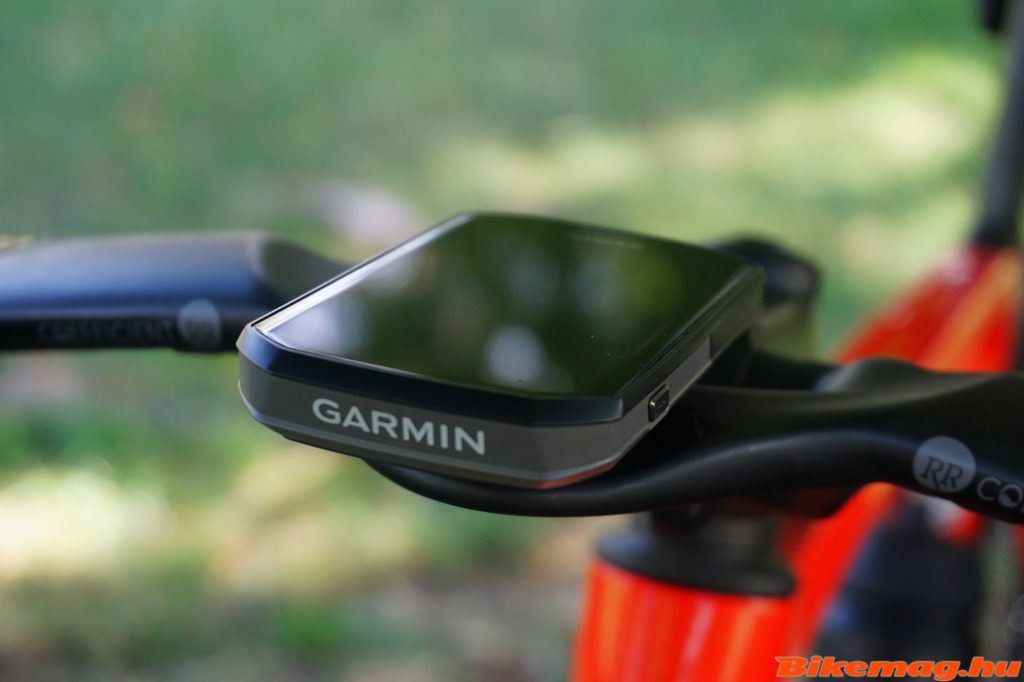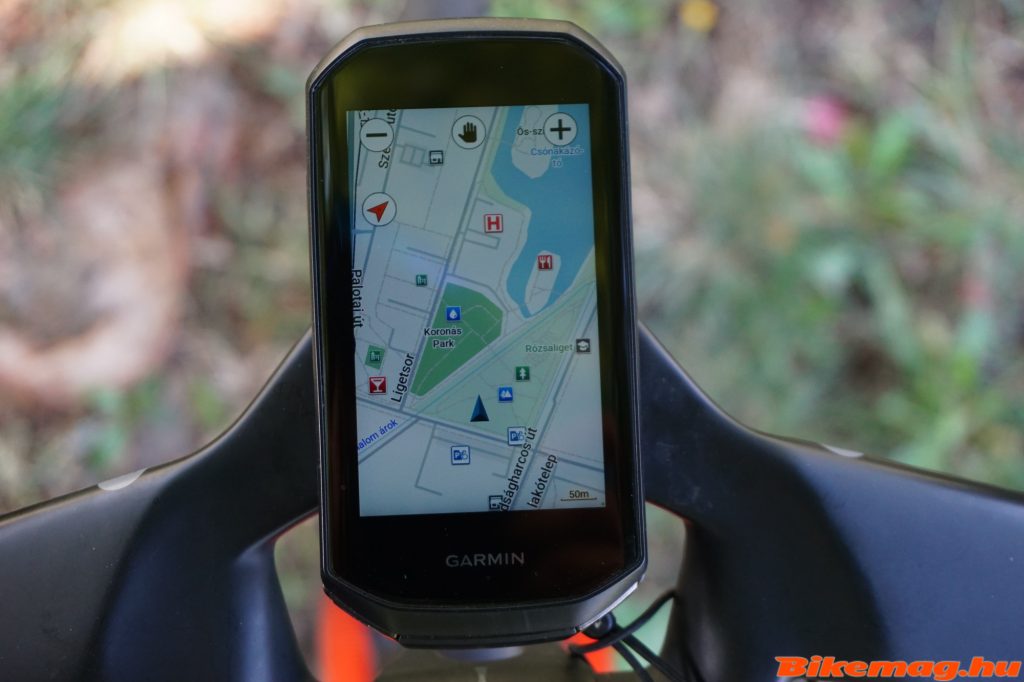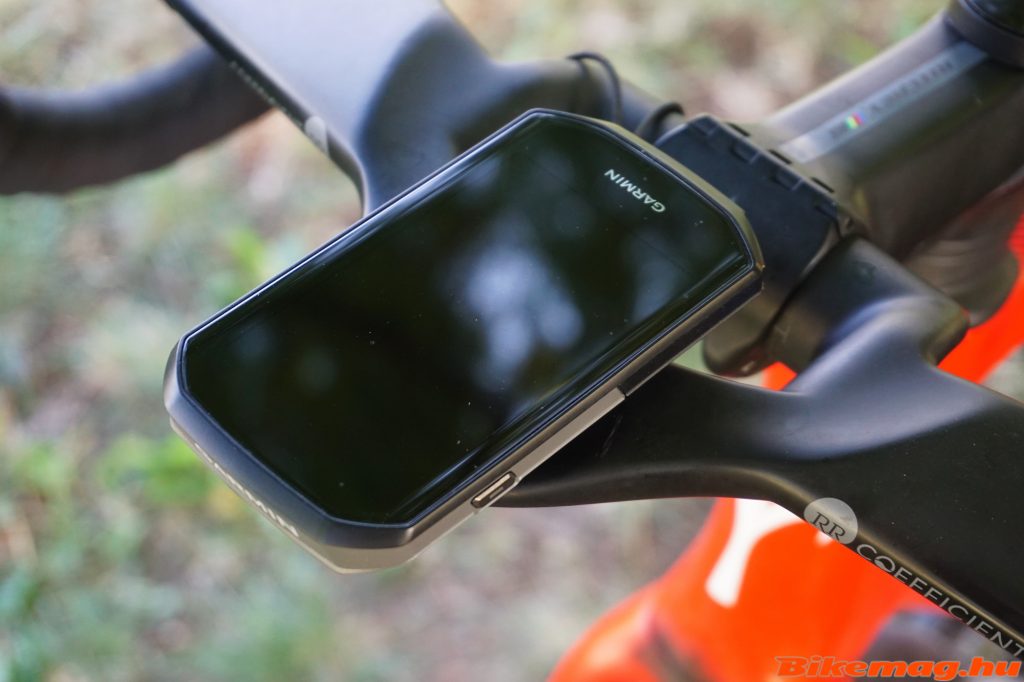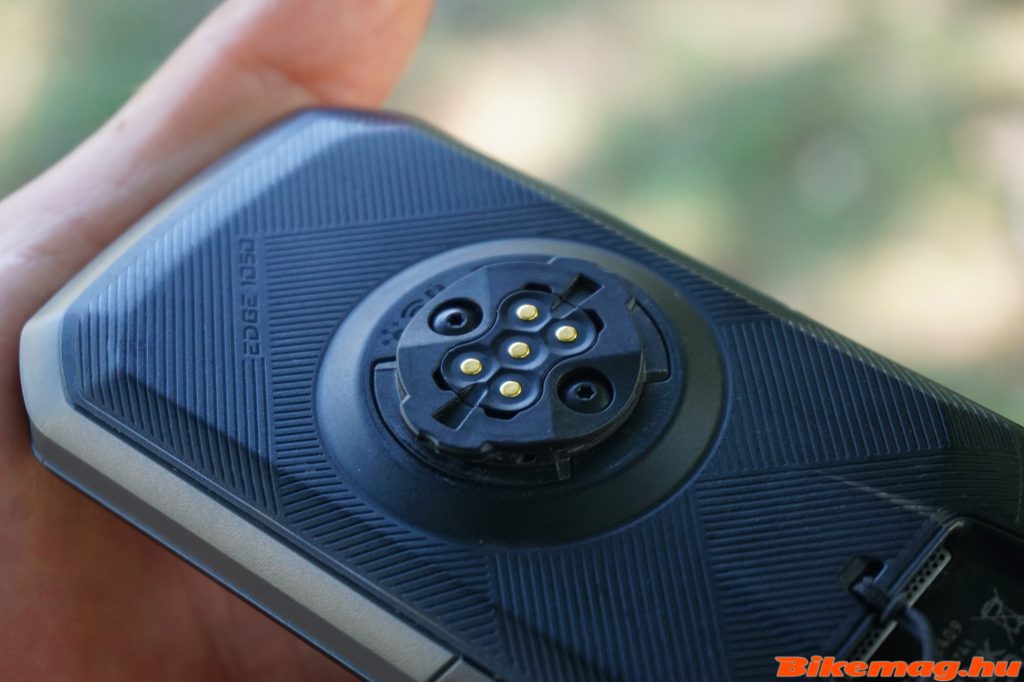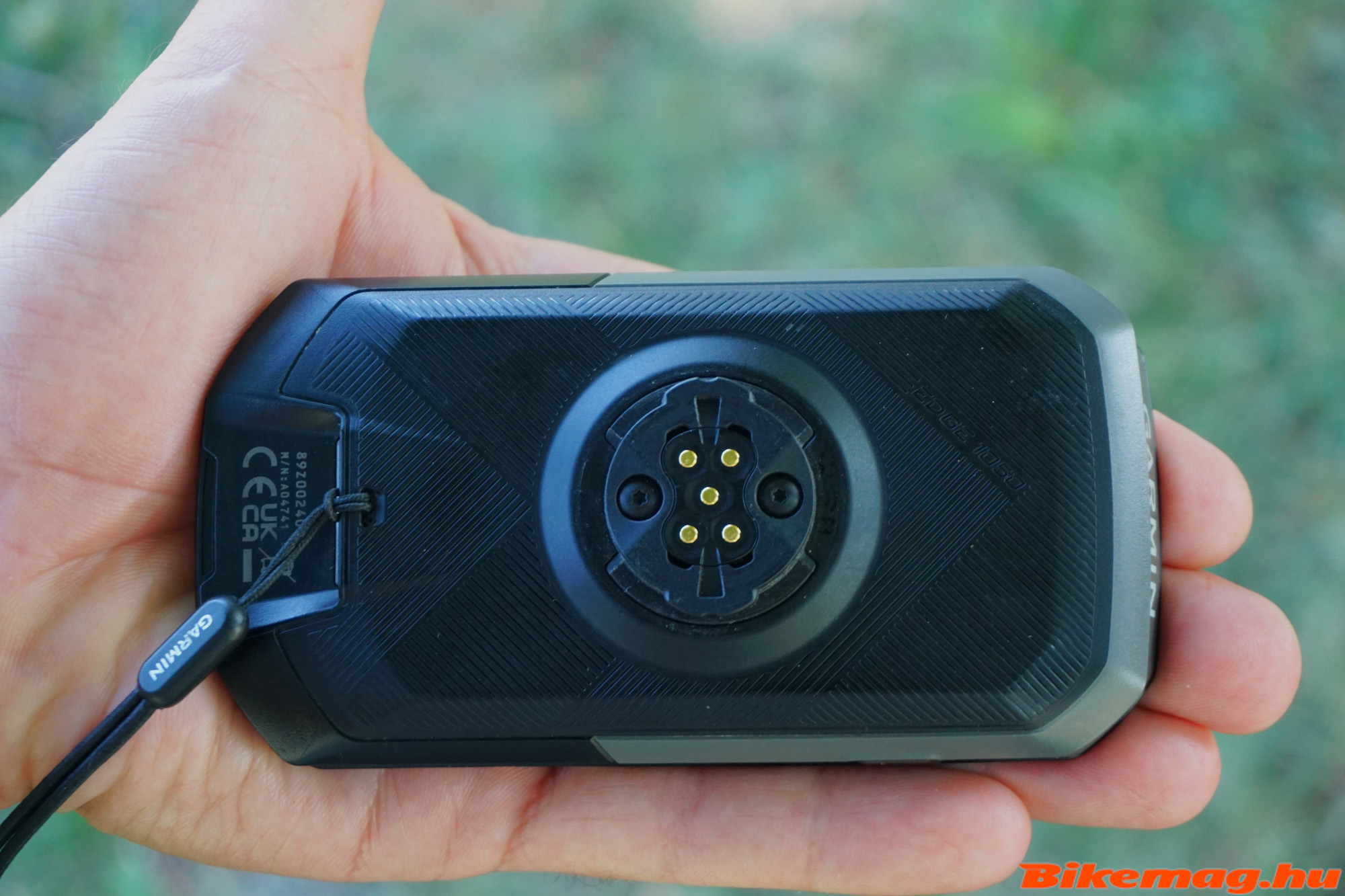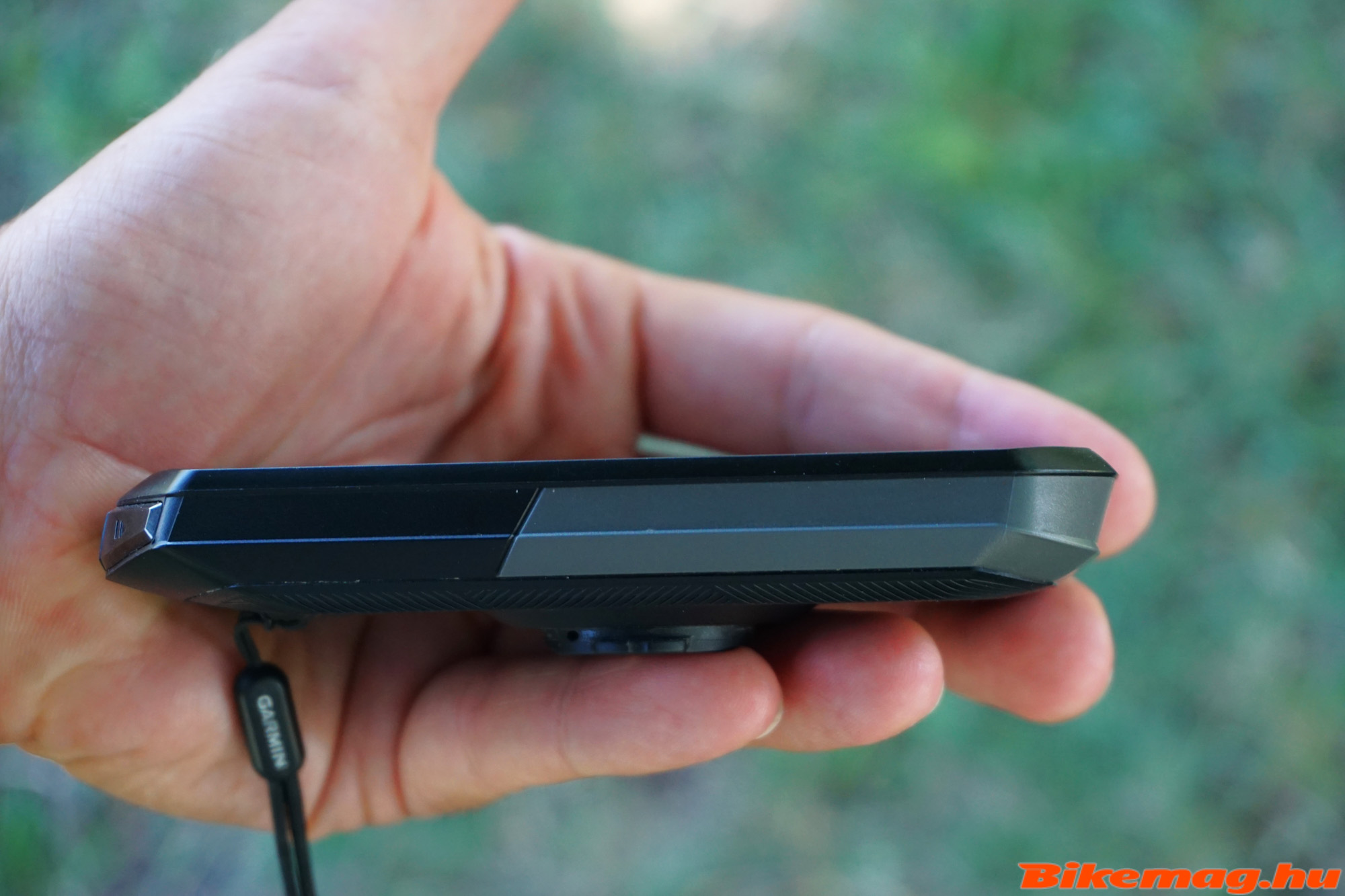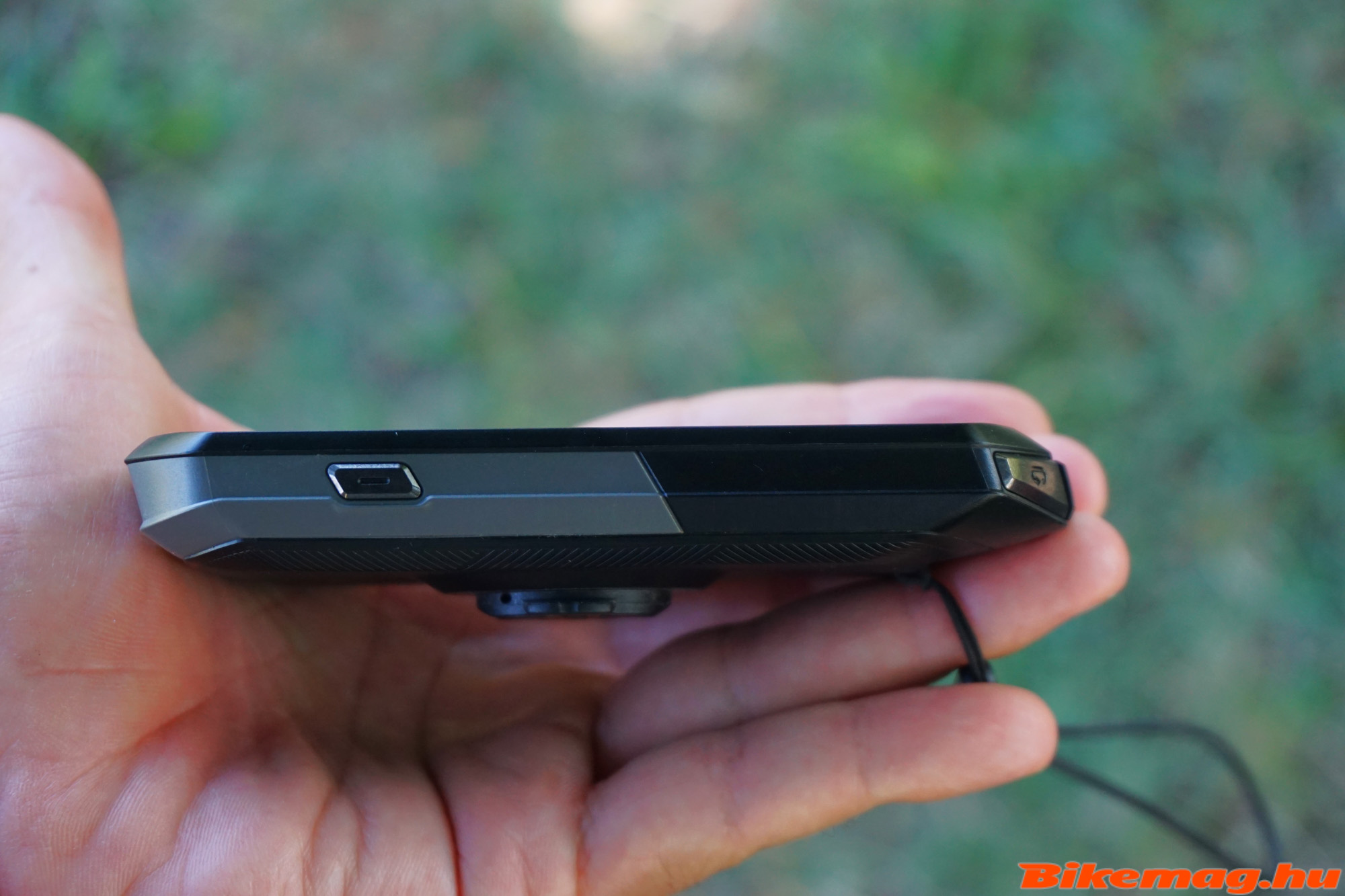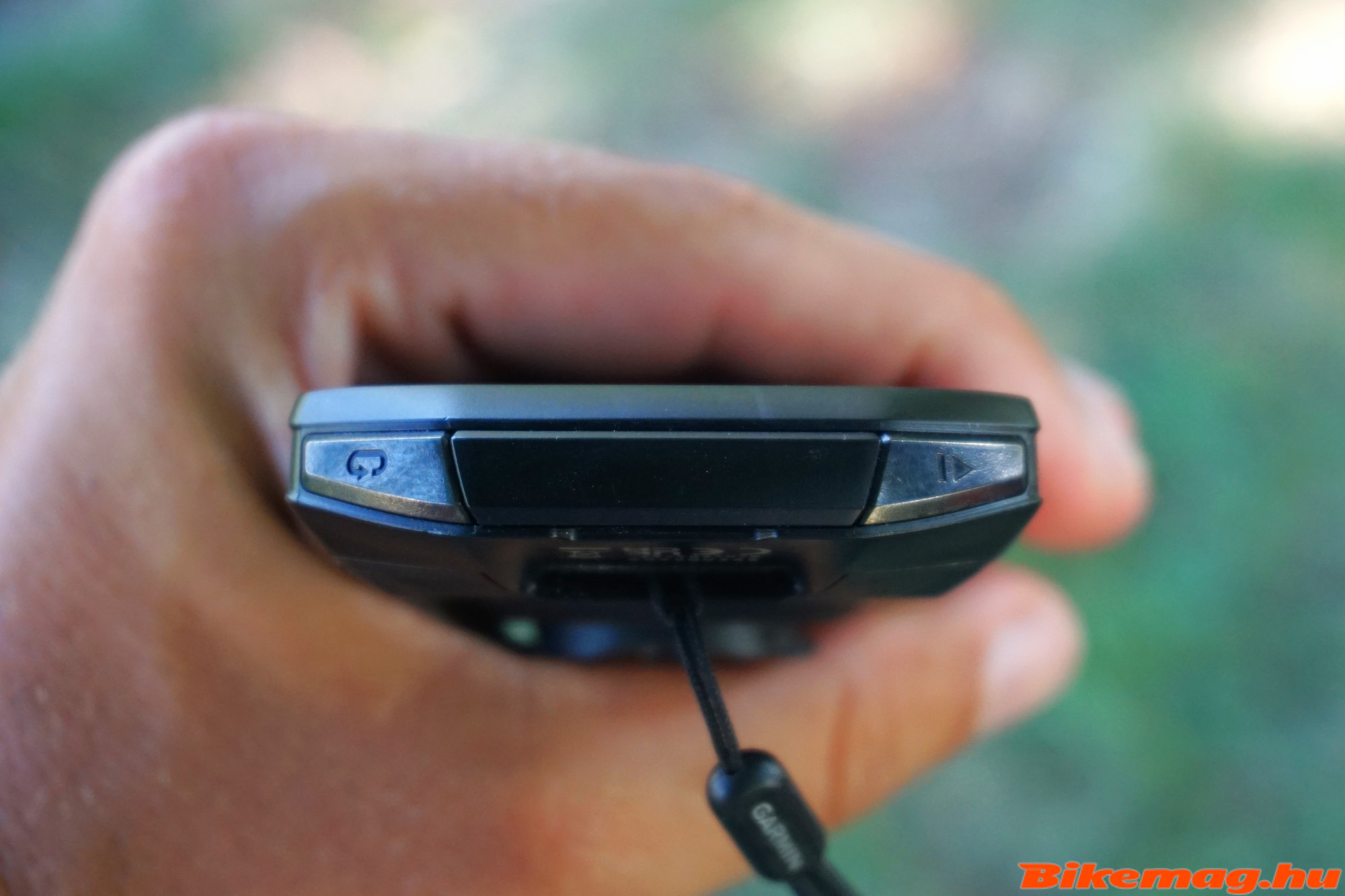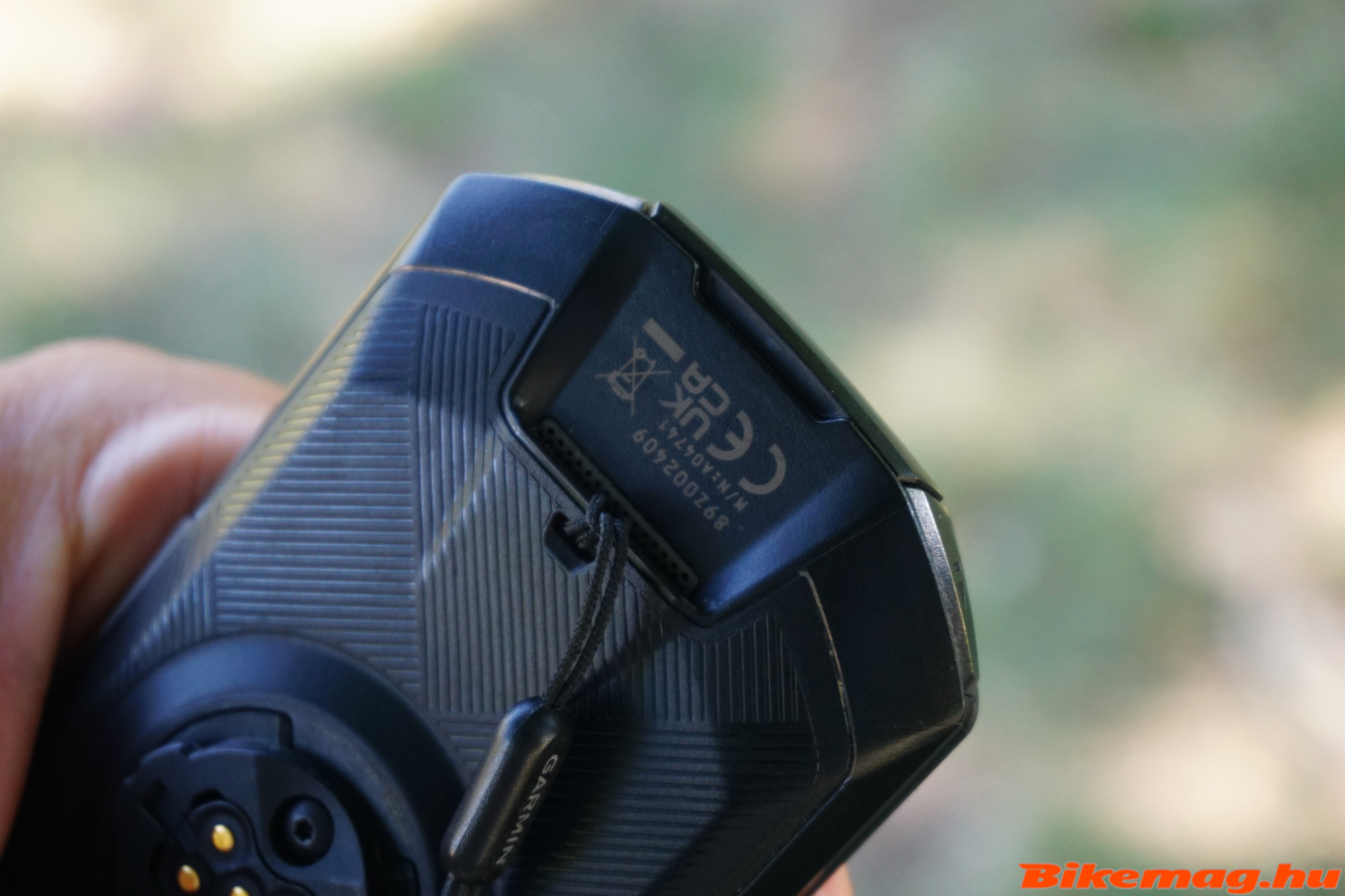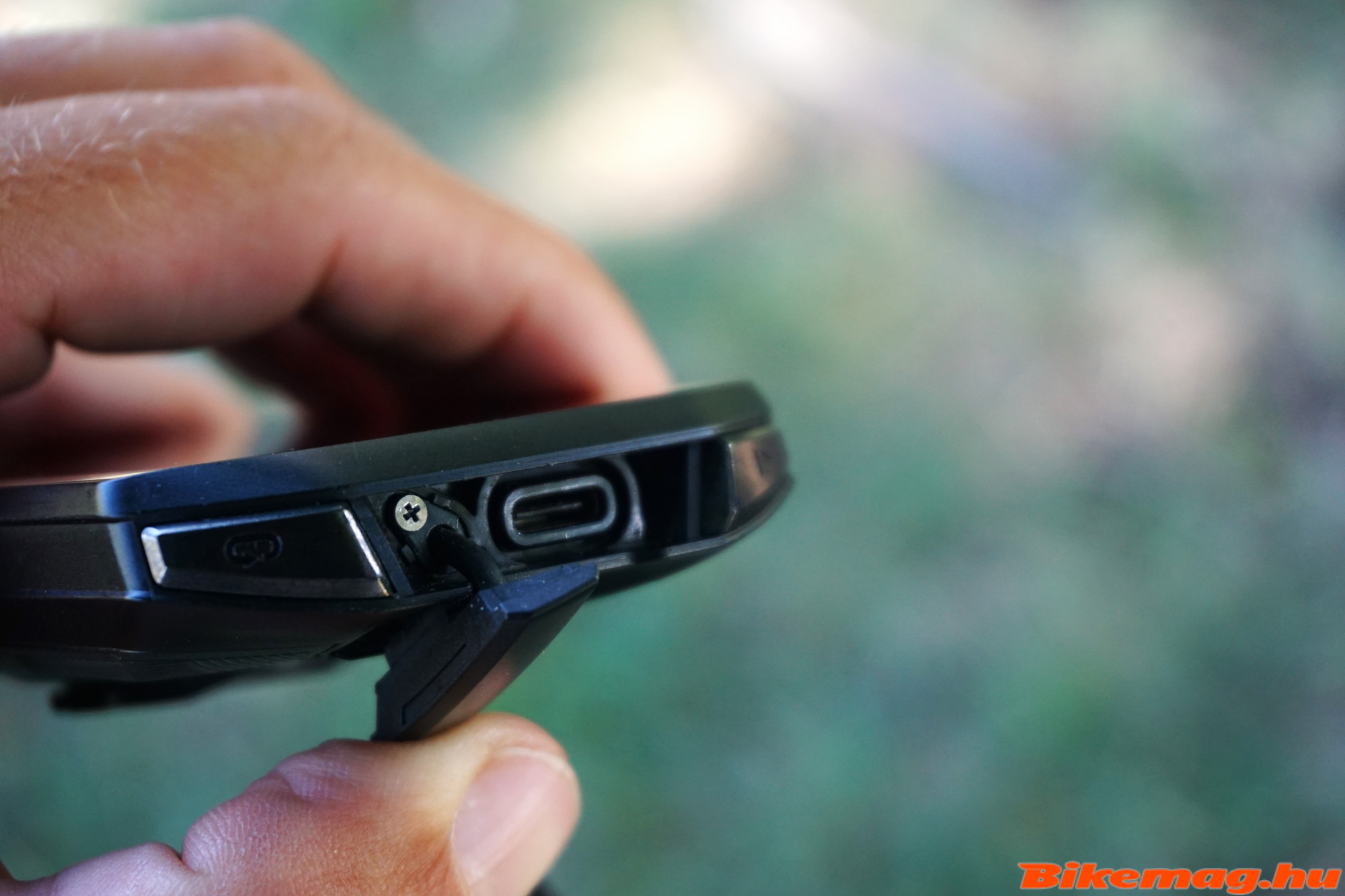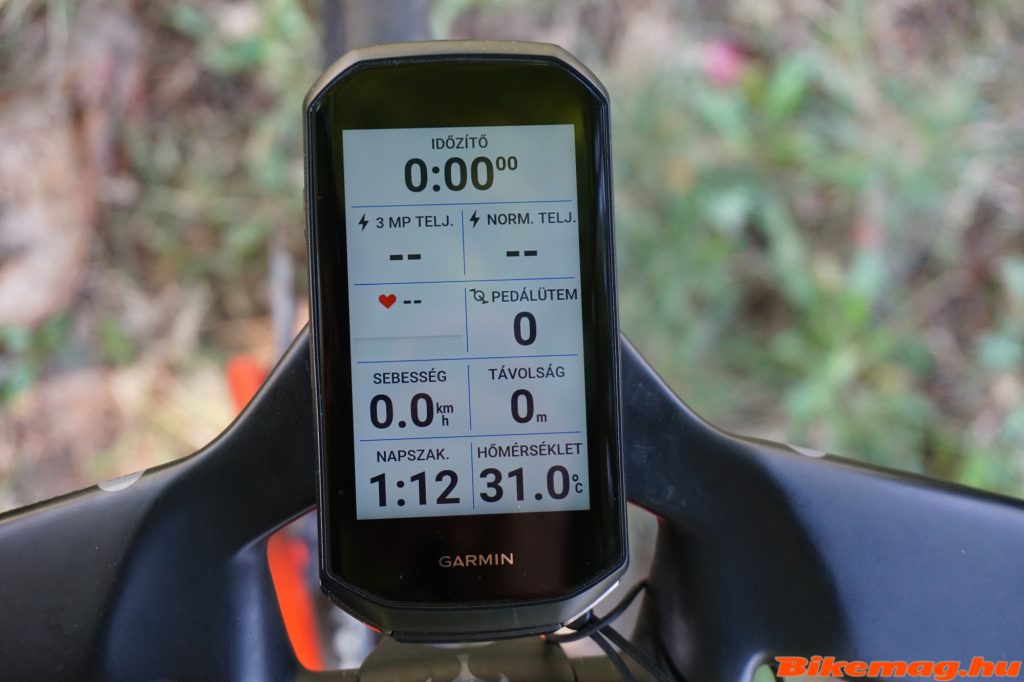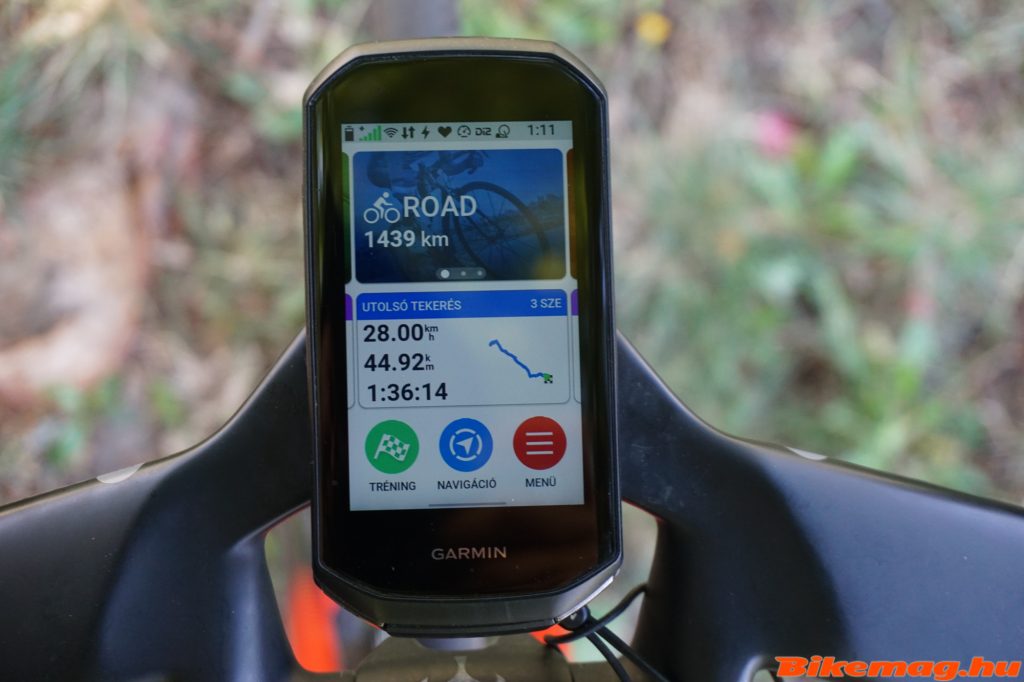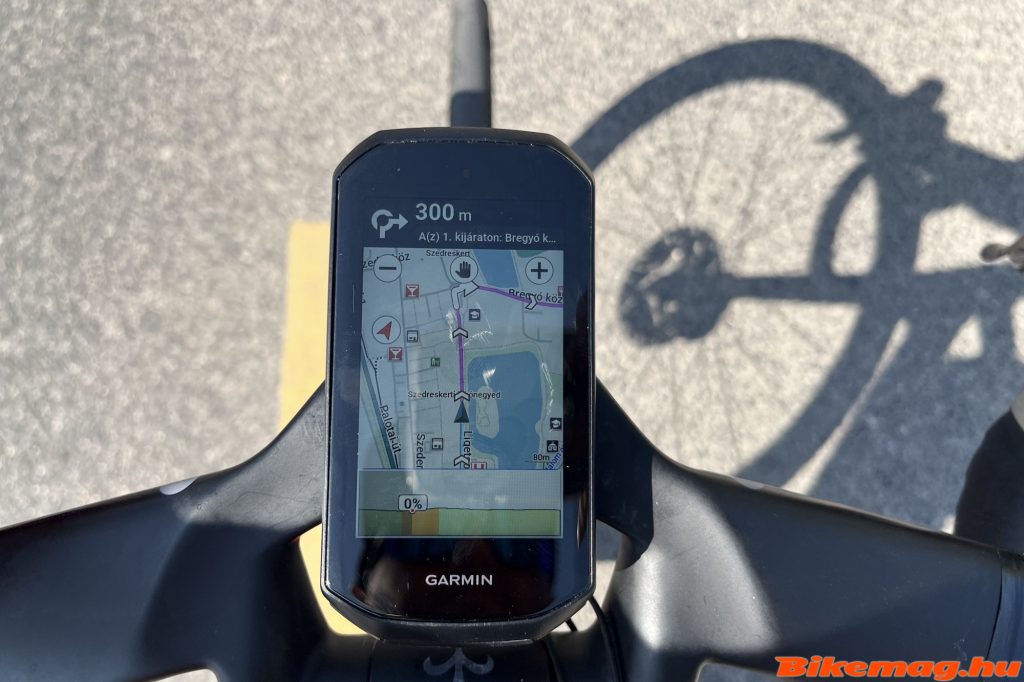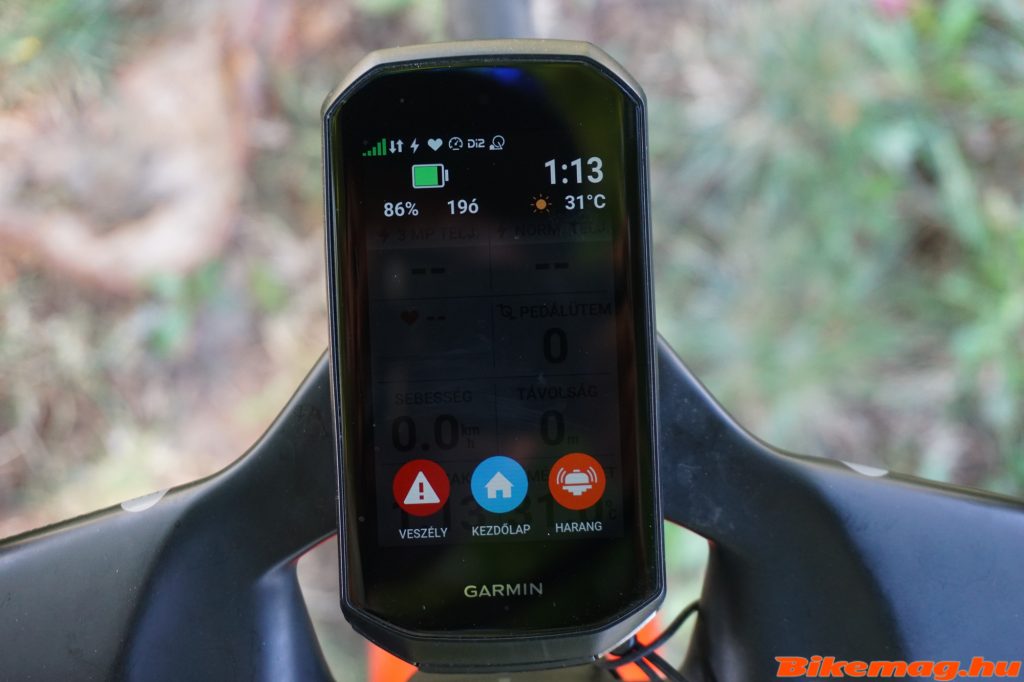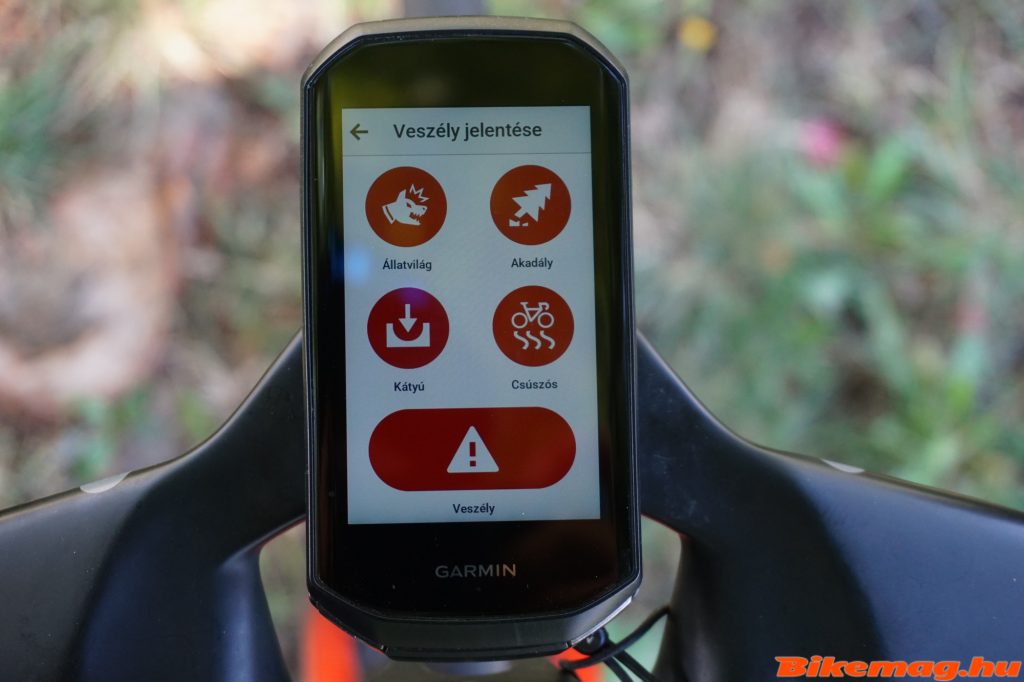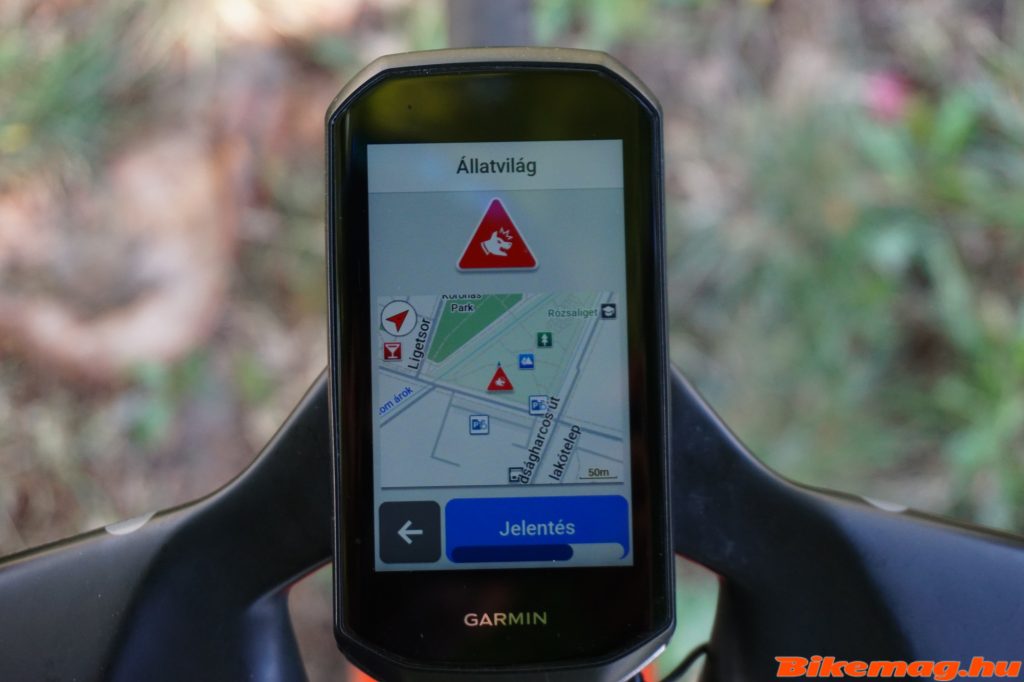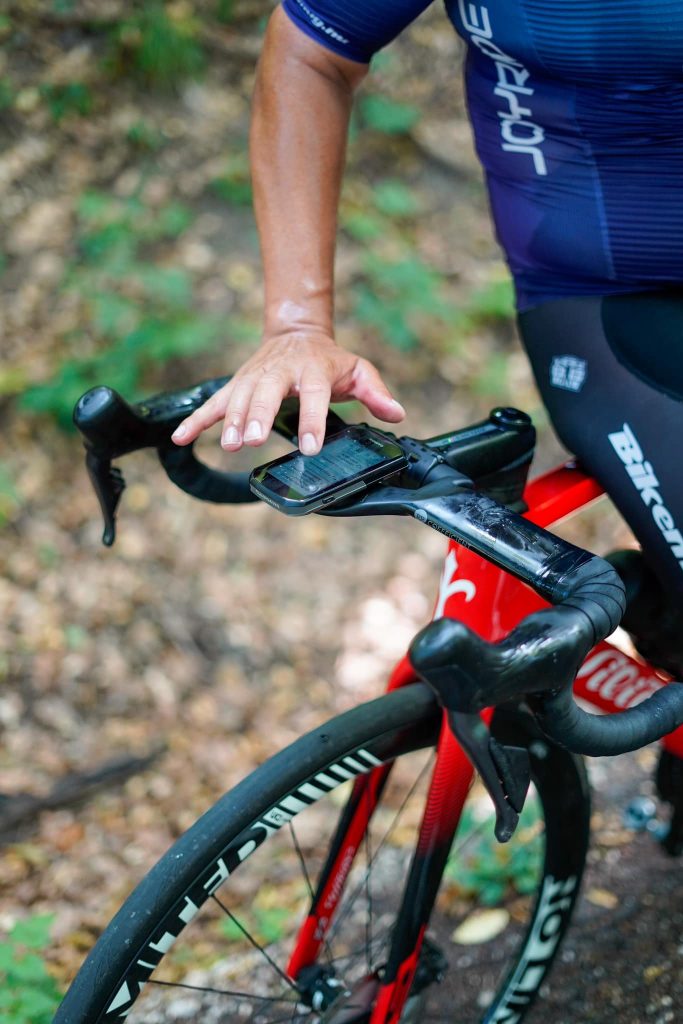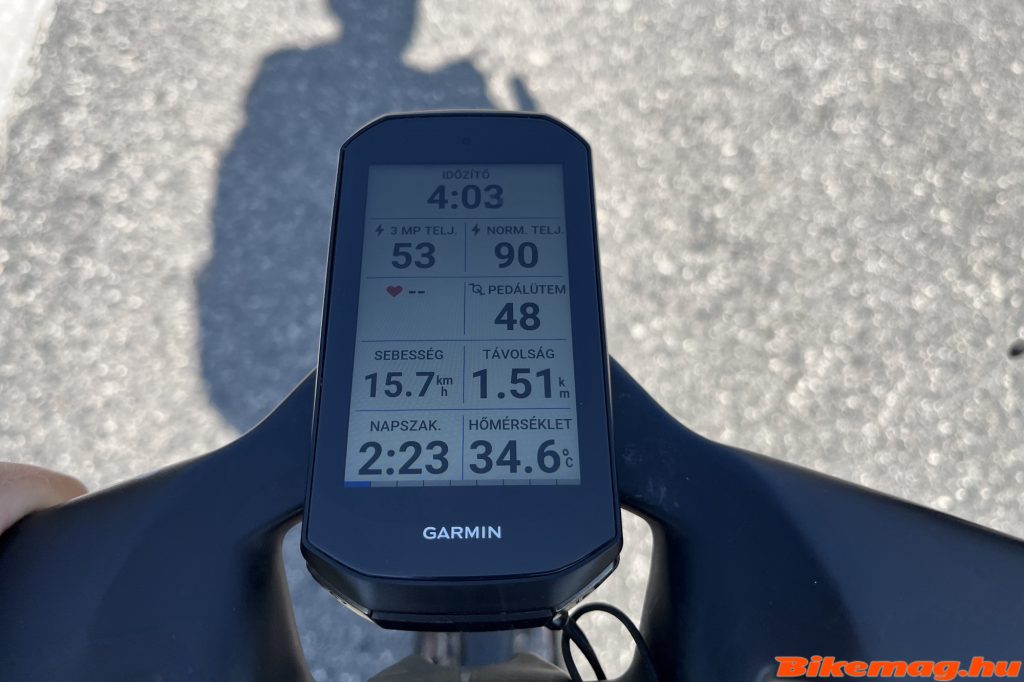Every year Garmin comes out with something new in the cycling computer market. Two years ago the top model Edge 1040 Solar was released, then last year the Edge 840 and Edge 540, and this year they have come out with another top model, the Garmin Edge 1050. The new model builds on the basis of the 1040, but instead of the much-maligned display I’ve been seeing, it finally has an LCD screen that’s always in clear view. Furthermore, it has a tougher battery, voice navigation, a bell(!) and a hazard notification function.
The past summers have been full of Garmin computer tests, every year Garmin surprises us with something new, although I wouldn’t have thought that after the Edge 1040 Solar and the Edge 840, 540 pair, this summer a big gun will be released again. But it did happen, and as soon as I came across the new device on international forums I immediately indicated to my local Garmin distributor that I would like to test the Edge 1050, luckily they were partnered again and as soon as the new computers arrived they gave me one for a longer test.
Of course, before I got the Edge 1050, I looked into what it could do that was different from its predecessors. It’s important to point out that it doesn’t replace the Edge 1040, but has been placed alongside it in the top end, so the 40 series continues to run, with different needs than the Edge 1050.
Why was there a need for a new top-of-the-range model next to the Edge 1040? The answer is simple, because of the display. I’ve mentioned in all my 40 series tests as a disadvantage that they’re not visible in all conditions. They are very visible in sunlight and are very energy efficient because they do not require any brightness (they are illuminated by sunlight), but in low and variable light conditions they are less visible, which can be compensated by high brightness, which is not very energy efficient. This is how an Edge 1040 Solar can last up to 45 hours in bright sunlight, while in variable light conditions it can last only 8-10 hours at maximum brightness. Of course, many people besides myself have reported this problem to the manufacturer, who in response to user feedback has developed the Edge 1050, which features a pin-sharp LCD display (with its advantages and disadvantages). It is important to note that I am not trying to state that the Edge 1040 is bad, the correct term is that it meets the needs of a different segment compared to the 1050, which I will come back to at the end of this article. The two computers are identical in about 99% of the features.
Looking at the specs, you can see that the Edge 1050 is based on the Edge 1040, which Garmin doesn’t hide for a minute, although I think the design of the two computers is very different, while I compared the 1040 to a piece of jewellery in the test, the 1050 with its angled corners is more like a cycling computer (what a surprise, IT IS a cycling computer 
As I mentioned above, the Edge 1050 has a LCD display instead of a transflective display, and due to the higher power consumption, a larger battery has been added, which makes it 28 grams heavier (161 grams is the factory weight of the Edge 1050). Although honestly if you’re that much of a “gram person”, you’re not going to go for the biggest computers, you’re going to stick with the Edge 840 or Edge 540, which are even lighter and easier to fit on the handlebars. I think that weight is absolutely irrelevant for a computer like this.
Out of the box, the Edge 1050 definitely feels like a quality cycling computer to me, with a good grip, good feel to the plastic and the device holds together when pressed. I was very surprised when I first switched it on, it started up in the blink of an eye, no need to wait many seconds. I didn’t have to fiddle much with the setup, I just selected in the Garmin Connect app to drag and drop the settings, fields, sensors from the Edge 840 I tested last year to the Edge 1050, which I did in about half a minute. That’s how long it took to get settled in the new computer… It’s a very nice and useful feature for those buying a new computer.
I’d say that at first I was taken by the detail and beauty of the LCD display, but it wasn’t that, it was the speed of the computer. This is the fastest Garmin I’ve ever used. It scrolls at the speed of a mobile phone and does so without any lag. Of course, the screen may have something to do with this, because on a slower panel everything happens slower (I’ve experienced this from other brands), and on a faster one it’s limited only by the power. My favorite story about its speed is that my girlfriend also commented that while I was using the Edge 1050 she didn’t have to wait for me outside the house, we could start right away. I had all the sensors in a few seconds and didn’t have to wait more than 2 seconds for the GPS signal even under the trees. And speaking of GPS, the Edge 1050 supports basically all satellite systems and is very accurate and very fast. For example, in one of the corners where all the computers were measuring speed in a jumble, the Edge 1050 gave stable and real data as if I was using a speed sensor.
With the Edge 1050 you get an infinite number of features for a mortal cyclist, I won’t even go through all of them because on the one hand I can’t 
Coming back to the sensors, the Garmin Edge 1050 is compatible with almost everything that communicates with ANT+ or Bluetooth – be it a smartwheel, wattmeter, blood oxygen level meter or Core sensor, – we can display all the data on the screen. In workouts you get immaculate support; the computer analyses everything, suggests a training plan, calculates fluid- and nutritional intake, really everything. Of course, I always say as a coach that an algorithm is not necessarily a replacement for a coach, but it’s definitely a good direction, much better than going after your own head and over- or under-train yourself. A very good example of how the algorithm works is Stamina, which shows you how many more km you can go at a given pace/intensity, it monitors your heart rate, watts and calculates the values from these, in a basic sense these are a good approximation. I will always say that one of my favourite things about Garmin is the lap summary feature available during training, where I can see the lap data in comparison while training (plus it’s not even a “smart” feature, but it’s important).
The LCD display really comes in handy for navigation, it’s really visible in all lighting conditions, and the detail is excellent, you can see everything beautifully. Garmin doesn’t have any problems with navigation, it does its job very nicely, not only when following a route or navigating, but also when uploading a route from an external application. For example, I don’t plan a route in Connect, but I usually drag the route from Strava or RidewithGPS, which can be done with a few clicks. Anyway, the display is so big that we can plan on the Edge 1050 without any problems (even offline), but I think it’s much easier to put it together on a computer (desktop) at home and then transfer it, of course sometimes we have to do it on the go. It has 64 GB of memory, which is enough for everything within reason.
Voice navigation
One of the real novelties of the Garmin Edge 1050 is the voice navigation, which is made possible by the built-in speaker. Not only does the display flash where to go, but the device also announces it in the language of your choice, (in our case) in Hungarian! Based on my observation, at max volume of 30km/h, navigation is still audible on the highway if there is no strong wind, in the field it varies a lot depending on the noise of the terrain. For example, in a gravel race I could only hear the computer talking but I couldn’t understand what it was saying, while when I went out with my girlfriend in the field she was riding with the sound of my computer.
I always have to mention the ClimbPro feature because I think it’s one of the most useful features on a mountain. ClimbPro shows how much of the climb is left, what gradient is coming up and a few other important things like that. Until last year this was only available while navigating, but since last year it’s been available also in Free Ride mode, so when you’re riding without navigation it will still show/predict the climb ahead. In the Edge 1050, you can drag and drop the ClimbPro data to see how much data you want to see while on the climb.
Compared to last summer, the Free Ride function has improved noticeably, because last year the Edge 840 was still signaling “phantom hills” during testing, but now it doesn’t happen anymore. In fact, we can adjust the size of the hills the computer shows during ClimbPro.
The Edge 1050 also includes an unexpected feature regarding the speaker, a bell. Tapping on the screen while in motion brings up a menu with one of the big icons for the bell, which when pressed the computer makes a ringing sound that we can hear quite clearly. But I think this feature works best if you’re using electric gears and you can set the buttons on the dual control lever to control the computer, so you don’t have to take your hand off the lever to ring the bell. If you don’t have a drop bar, you can use the buttons on the Edge Remote to do it. For example, I set the bell to double press the left hidden button on my Ultegra dual control lever. Not that I use it much outside of fun, but there’s the option for it. And speaking of the hidden buttons on the lever, I give Garmin a huge red mark for the fact that you can set 3 functions on one button at once – short press, double press, long press – which covers the functions you need to use on the go quite well and you don’t even need to touch the touchscreen (unless you want to see the map). One thing to note about this is that finishing a workout is a bit cumbersome on the Garmin, I think you have to tap the screen more than necessary to save the workout when you get home and the upload isn’t always automatic – although the phone may be to blame for the latter.
In addition, a hazard warning feature has also been introduced on the Edge 1050. Basically, Garmin has integrated an app into the device where you can mark on the map where there is a fallen tree or any dangerous situation while you are riding, and this will be seen by other Garmin users who have this feature on their computer. They’ve basically developed an app that’s already tried, tested and popular in car traffic. Of course, the function requires mobile internet connection because without it you would not be able to send or receive data. Since this is a very new feature, it has not been tested very much, as it is not used by many people (only one danger sign appeared on the display, in Esztergom).
The accident alert feature is not new in Garmin devices, but I managed to test it for the first time (because I usually start by turning it off). After a big fall I didn’t get up quite quickly, I hurt my elbow and when I walked to my bike I saw the alarm had started, but I quickly turned it off. So it does work, but no one should need it.
How usable is the touch screen in bad weather conditions?
Here comes the real test part of the article, the poor Edge 1050 got a “good beating” from me. It so happened that I got the computer for testing the day before the infamous vasi double gravel weekend.
The plan was to use it in both races, which I did, but if I had known that it was going to rain all the way through the gravel race in Vasvár, I wouldn’t have put the poor thing on. So the first test of the Edge 1050 was a pouring rain and muddy gravel race.
I suppose many people are now expecting me to say something negative about the touchscreen, but I’m going to disappoint them. It was also surprising to me how well the Edge 1050’s touchscreen works in bad weather compared to its predecessors. I remember with the Edge 1030 I even had problems with sweat on a regular basis, and then with the Edge 1040 the computer would change fields on its own during a workout if the display wasn’t locked, but the Edge 1050 tolerated the rain very well. I didn’t even have to close the display during a race, it didn’t turn the pages or change fields. And I even had to use the map during the race, not because the Garmin was navigating wrong, but because the organisers changed the track during the race due to bad weather, which I didn’t have a route for and I got lost, so I used the Edge 1050 to check where I was exactly and how many villages were on the main road no. 8 until Vasvár. So in the rain I zoomed in, scanned the map using the touch screen, and it worked perfectly. I was wearing a long-fingered glove, which I used to wipe the display from time to time to avoid getting muddy water on it, but of course the glove was soaked, too, so the wipe was only good for seeing the display. The brightness sensor tolerated the rain the worst, when a drop of rain fell on it the display became darker because it sensed that it was darker, i.e. less brightness was enough. That’s the thing you really can’t do anything about. The only other thing that didn’t like the rain was the lid of the charging port, on the next charge I encountered a significant amount of sand under the lid, which also shows that the computer can’t get wet through the port.
LCD or transflective display, Garmin Edge 1050 or Edge 1040?
For my usage and needs, there is no question that the LCD display with the Edge 1050 is the winner for me. It is important to me that I can see the display every time I look at it, I don’t have to spend seconds looking at it and searching for data. Even during a race, when I look at the map, I can see where to turn or in training, I can see the data in front of me. The only way the Edge 1040 Solar could do this in the test in a wooded environment was to have the brightness turned up all the time.
A good example of this is the Pilis I. time trial – where I started with the 1040 two years ago – and in this race I didn’t even give the automatic brightness a chance, I turned it up to max at the start. While I raced with the Edge 1050 in the same way in Pilis a week and a half ago it didn’t even occur to me to touch the automatic brightness, even though I was racing with a fixed dark lens, not a darkening one like 2 years ago. Of course, the LCD display has a higher power consumption in sunlight, with all sensors (watt, heart rate, Core) and navigation turned on it lasted about 16 hours on a single charge. Without navigation it lasts the promised 20 hours, which is not bad for a computer with such a large display if you don’t know what the Edge 1040 Solar is capable of.
For multi-day rides or races where charging is not so easy, the Garmin Edge 1040 Solar is a good choice, the transflective display gives you a huge battery life in exchange for slightly lower visibility, it hardly dips in bright sunlight (and is still perfectly visible), while in mixed use it can last 45 hours, so it can easily last a Balaton Bike Derby without recharging.
In summary, if you want a clear display in all conditions and are happy with 16-20 hours of battery life then the Edge 1050 is your computer (which also comes with voice navigation), but if you need very long battery life and don’t mind looking at the display a little more from time to time then the Edge 1040 Solar is for you.


